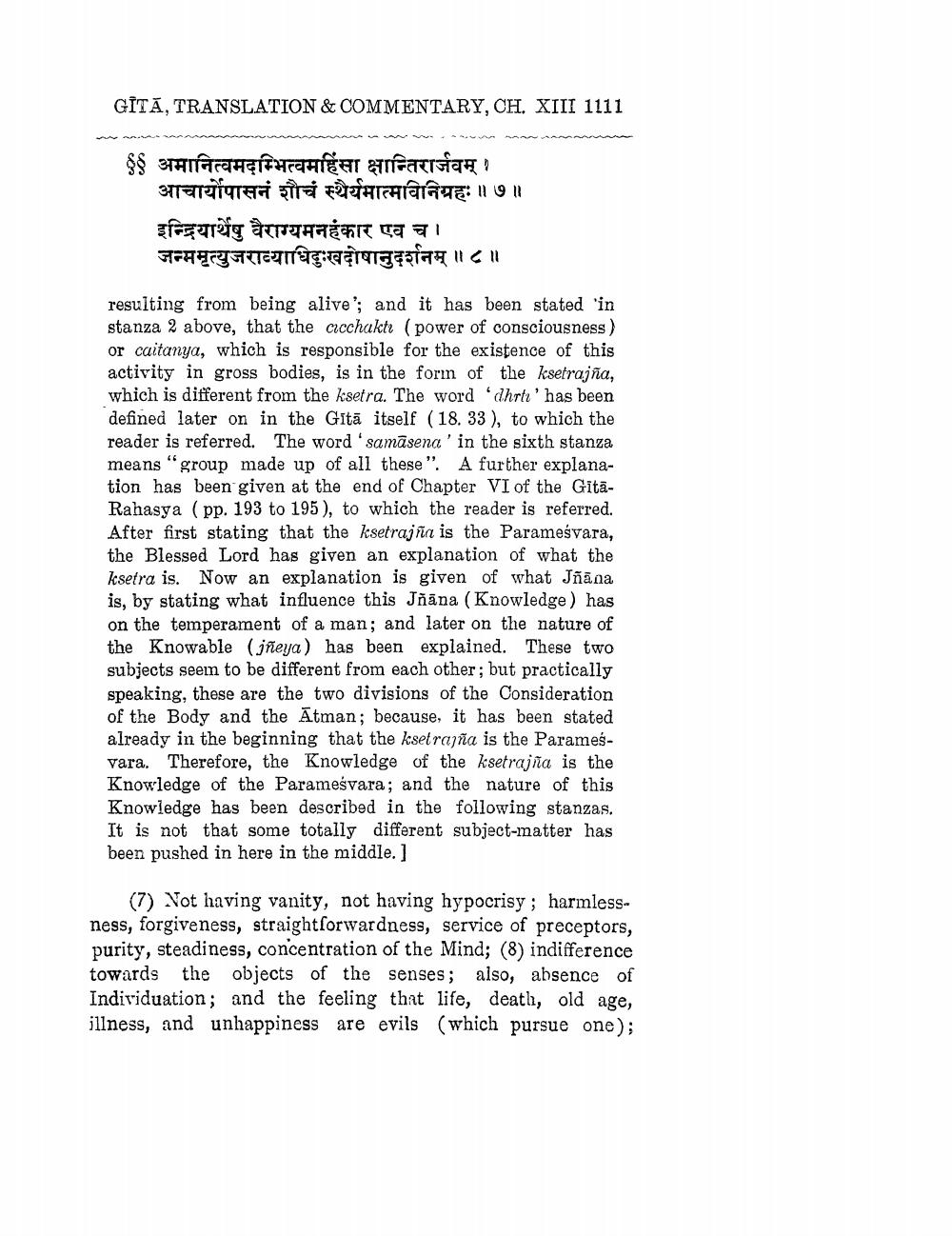________________
GĪTĀ, TRANSLATION & COMMENTARY, CH. XIII 1111
६६ अमानित्वमदम्भित्वमहिंसा क्षान्तिरार्जवम् ।
आचार्योपासनं शौचं स्थैर्यमात्मविनिग्रहः ॥ ७॥ इन्द्रियार्थेषु वैराग्यमनहंकार एव च । जन्ममृत्युजराव्याधिदुःखदोषानुदर्शनम् ॥८॥
resulting from being alive'; and it has been stated in stanza 2 above, that the cicchaktı (power of consciousness) or caitanya, which is responsible for the existence of this activity in gross bodies, is in the form of the ksetrajña, which is different from the ksetra. The word 'dhrtı' has been defined later on in the Gitā itself (18. 33), to which the reader is referred. The word 'samasena' in the sixth stanza means "group made up of all these". A further explanation has been given at the end of Chapter VI of the GitaRahasya (pp. 193 to 195), to which the reader is referred. After first stating that the ksetrajña is the Parameśvara, the Blessed Lord has given an explanation of what the ksetra is. Now an explanation is given of what Jñāna is, by stating what influence this Jñāna (Knowledge ) has on the temperament of a man; and later on the nature of the Knowable (jñeya) has been explained. These two subjects seem to be different from each other; but practically speaking, these are the two divisions of the Consideration of the Body and the Ātman; because it has been stated already in the beginning that the kset rajña is the Paramesvara. Therefore, the Knowledge of the ksetrajña is the Knowledge of the Paramešvara, and the nature of this Knowledge has been described in the following stanzas. It is not that some totally different subject-matter has been pushed in here in the middle.]
(7) Vot having vanity, not having hypocrisy ; harmlessness, forgiveness, straightforwardness, service of preceptors, purity, steadiness, concentration of the Mind; (8) indifference towards the objects of the senses; also, absence of Individuation; and the feeling that life, death, old age, illness, and unhappiness are evils (which pursue one);




